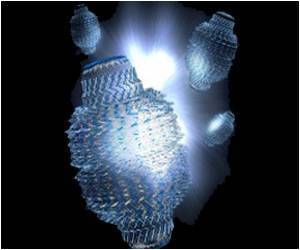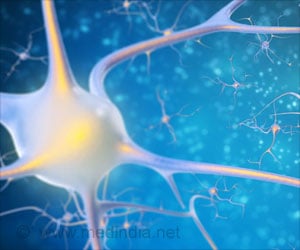Researchers report the successful use of a form of MRI to identify what appears to be a key biochemical marker for cognitive impairment in the brains of people with multiple sclerosis (MS).

Half of people with MS experience learning and memory problems, for which there is no approved treatment, along with movement abnormalities that characterize the debilitating autoimmune disorder.
"We have a potentially novel treatment for cognitive impairment in MS, a devastating condition on the rise that affects at least 400,000 people in the United States," says study leader Adam I. Kaplin, M.D., Ph.D., an assistant professor of psychiatry and behavioral sciences and neurology at the Johns Hopkins University School of Medicine.
Kaplin cautions that the treatment has so far been used only in mouse models of MS and is years away from clinical trials in people.
Nevertheless, he says, the research, described in the Proceedings of the National Academy of Sciences published online on Nov. 19, has the potential to speed development of new drugs to treat cognitive impairment not only in MS patients, but also in patients with Alzheimer''s disease and other neurological conditions.
Along with cognitive difficulties, MS patients can experience numbness, weakness, loss of balance, blurred vision and slurred speech. MS is believed to be caused by the immune system wrongfully attacking a person''s own myelin, a fatty protein that insulates nerves and helps them send electrical signals to control movement, speech and other functions.
Advertisement
For the study, Kaplin and his colleagues employed magnetic resonance spectroscopy, which uses standard MRI scanners but adds tests to detect and compare various brain chemicals found on the images. The Johns Hopkins team performed the tests on nine occasions on the brains of subjects with MS, focusing on the hippocampus, the brain''s learning and memory center, looking at levels of various brain chemicals.
Advertisement
Kaplin notes that the availability of stronger MRI magnets in recent years made the NAAG-related findings possible. Buoyed by the strength of the correlation, Kaplin and his team set about determining if the findings were more than incidental.
Kaplin then contacted Barbara S. Slusher, Ph.D., M.A.S., director of the Johns Hopkins Brain Science Institute NeuroTranslational Drug Discovery Program, who has spent years studying NAAG and its metabolism in the brain. Slusher and her colleagues had identified novel drugs that could block the breakdown of NAAG into its component parts by inhibiting the enzyme glutamate carboxypeptidase II (GCPII), including 2-PMPA.
"For years, this has been a treatment in search of a disease," Slusher says.
Teaming up with Kristen A. Rahn, Ph.D., a psychiatry instructor at the Johns Hopkins University School of Medicine, the researchers bred mice with the rodent version of MS and treated them with 2-PMPA.
"Before we could even consider progressing to human trials with this class of drugs, the key was to show that the finding of reduced NAAG in the brains of MS patients was causally related to, and not just correlated with, their cognitive impairment, and to do this we needed to test this out in an animal model of MS," Rahn says.
They found that 2-PMPA was able to increase the NAAG levels in the MS mice close to those of a comparative set of mice without the disease.
Although the mice still showed physical signs of MS, such as dragging limbs and an inability to run quickly, their learning and memory improved significantly.
To test learning and memory, the mice were placed in a maze with one escape hatch but many dead ends. On Day 1, all of the mice wandered around and couldn''t find the correct escape hole. By Day 4, healthy mice and mice with MS given 2-PMPA went straight for the hole. They were able to find the hole twice as fast as those mice with MS but no drug.
The mice also were tested for fear conditioning, a marker for memory. On Day 1, a tone was played and then the mice were given a mild shock. Four days later, the researchers found that the healthy control mice and mice with MS given 2-PMPA froze in fear much longer when they heard the tone than other mice with untreated MS, indicating a stronger memory.
Kaplin says that, historically, researchers have considered potential MS drugs to be failures if they didn''t alleviate physical symptoms in the animal model. But while 2-PMPA didn''t reduce physical disability, it is worth pursuing as a treatment for its "remarkable" ability to improve learning and memory.
Researchers don''t know what role NAAG plays in cognition. It is possible, Kaplin says, that simply inhibiting its breakdown and having more of this neurotransmitter improves memory and learning. More studies are needed to elucidate this mechanism.
Kaplin says he hopes that pharmaceutical companies will take a renewed interest in the development of drugs like 2-PMPA for cognition improvement in MS and possibly other neurodegenerative diseases. Because 2-PMPA is not orally active, the researchers are working on new nanotechnology-based delivery systems to get the drug to the brain. In addition, Slusher is collaborating with the pharmaceutical company Eisai Inc. to develop new drugs that could be taken by mouth.
"We are encouraged that there could be a way to enhance cognition in people with MS," Kaplin says. "It''s something these patients desperately need."
The study was supported by grants from the National Institutes of Health''s National Institute of Mental Health (K23 MH069702 and T32 MH015330), the National Institute of Biomedical Imaging and Bioengineering (P41EB015909), the Montel Williams MS Foundation, the Nancy Davis Foundation for Multiple Sclerosis, the Transverse Myelitis Association and the Johns Hopkins Brain Science Institute.
Other Johns Hopkins researchers involved in this study include Crystal C. Watkins, M.D., Ph.D.; Jesse Alt; Rana Rais, Ph.D.; Marigo Stathis, M.S.; Inna Grishkan; Ciprian M. Crainiceanu, Ph.D.; Martin G. Pomper, M.D., Ph.D.; Camilo Rojas, Ph.D.; Mikhail V. Pletnikov, M.D., Ph.D.; Peter A. Calabresi, M.D.; Jason Brandt, Ph.D.; and Peter B. Barker, D.Phil.
Source-Newswise











